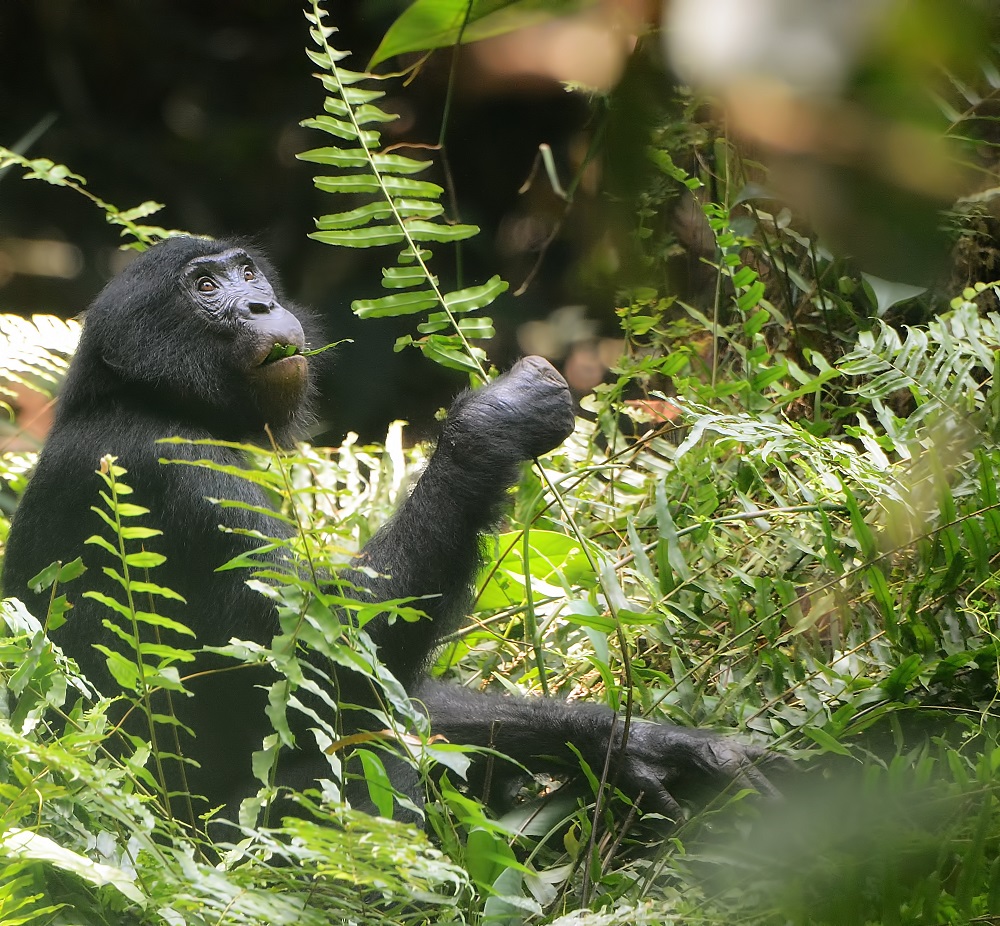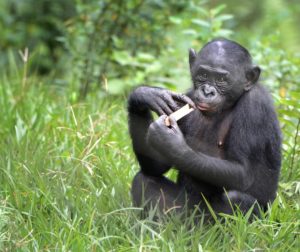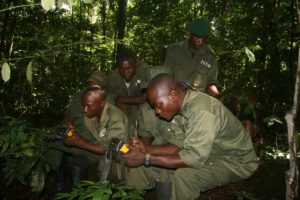Targeted management of Iyondji Community Bonobo Reserve

Protecting bonobo populations through targeted management of the Iyondji Community Bonobo Reserve.
Funding for this project has now finished
The problem

Bonobos, the gentler cousin of chimpanzees and our closest relative, are endemic to the Democratic Republic of Congo (DRC). With fewer than 25,000 left in the world, these animals and classified as endangered. They are under threat from illegal hunting for bushmeat and the wildlife trade, as well as the loss and fragmentation of their woodland home. Their slow reproductive cycle further exacerbates their vulnerability. Females only become fertile at 13 years old and give birth every 4-5 years. Despite their protected status, extensive bush meat hunting for local consumption, poaching for trade, and forest encroachment critically threatens bonobos, and the other flora and fauna that live in the Iyondji Community Bonobo Reserve, DRC. Worryingly, illegal human activity means that in the southern section of the reserve there are dwindling numbers of bonobos.
The solution

Recent field data collected last year in Iyondji has revealed evidence of high human presence in the wider reserve as well as a clear separation between areas of high human activity and areas of high bonobo activity – evidence that bonobos are actively avoiding humans. The daily patrols carried out by our partner NGO, ICCN, are also producing clear evidence that the presence of rangers in the management of the protected area is critical. Looking ahead, in order to better manage the reserve and protect its biodiversity, the ICCN team has divided the reserve into two main zones – ‘high bonobo low human’ presence zone (HBLH) and ‘low bonobo high human’ presence zone (LBHH). The team must maintain the existing protection for bonobos in their hotspots in the northern quarter of the reserve, whilst at the same time the rangers have recognized an urgent need to take full control of the southern part of the reserve. In the south there is a high level of human activity including fire-points at poaching camps and areas where the land has been cleared for farming. This is particularly important because while bonobo hotspots in the reserve are well protected, the loss of habitat in other parts of the reserve continues to compromise the long-term viability of bonobo populations.
Thank you to all our donors who helped us fund this work. You can help us support more projects like this with a donation today:
